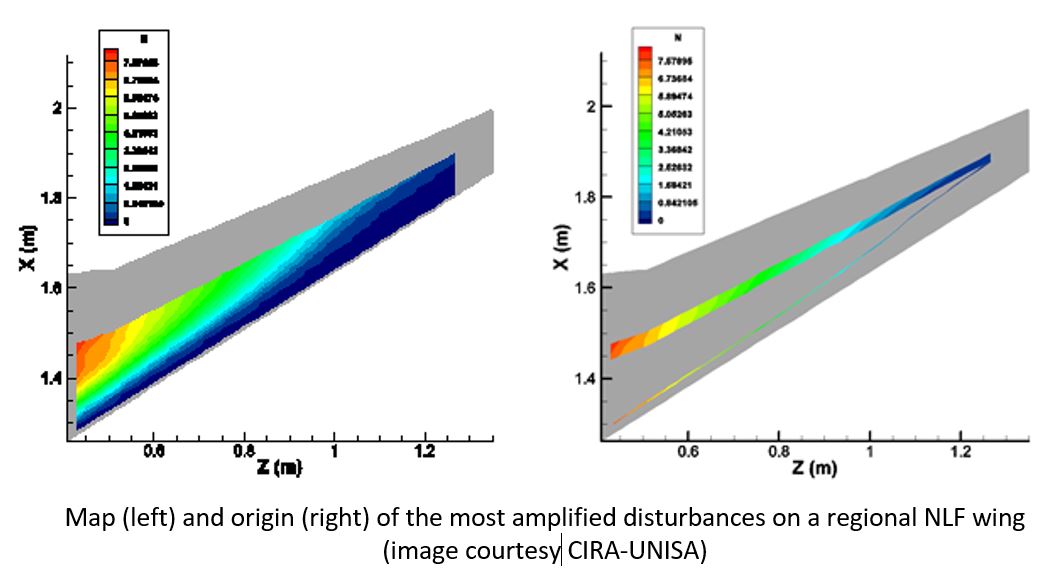ESTRO

ESTRO produces experimental and numerical data at low speed and cruise conditions to validate aerodynamic design of the Regional 90 sits turboprop A/C wing, including laminar flow extension measurements and wing span load distribution.
ESTRO is contributing to the achievement of Clean Sky 2 goals by providing support to CS2-REGIONAL domain driven by Leonardo Aircraft by performing the experimental wind tunnel test campaign, at low and high Mach numbers, of the elastic NLF wing of the TP90 A/C equipped of morphing devices for high lift and load control, and by predicting numerically the aerodynamic and laminar flow performance at flight Reynolds numbers.
In particular, the tests in wind tunnel conditions are performed at different Reynolds numbers, whose higher value is around 11 million, and at low and cruise Mach numbers.
Accurate pressure distributions, infrared flow images, wing deformation, wall balance and load control and alleviation measurements are expected. The data are going to be the result of an experimental test campaign performed in a large European transonic Wind tunnel characterized by a high-quality flow in terms of turbulence content, with the main objective to evaluate the laminar flow robustness, the aerodynamic performances and load control effectiveness of movable and morphing surfaces of a turboprop A/C wing at high/medium speeds (Mach numbers up to 0.67) and wind tunnel Reynolds number around 10-11 million.
Numerical simulations are performed to first assess the wind tunnel experimental results and then to extrapolate the data to flight conditions.
Flexibility effects of morphing Droop Nose and the effectiveness of load control devices are analyzed by means of an aero-structural coupled analysis. This coupled analysis is integral part of the activities finalized at taking into account: the wing deformation in flight conditions and possible surface imperfections caused by the presence of the droop nose; the load control effectiveness on the deformed wing.
In addition, the effects of the propeller on the wing laminar flow extension will be evaluated through 3D boundary layer computations coupled to linear stability analyses based on ray theory.
IBK is responsible for aero-structural calculations and strongly contributes to WT measurement extrapolation to flight conditions.
- University of Salerno coordinates the project and performs CFD computations
- Dream Innovation srl is responsible for WT tests and contributes to numerical analysis
- IBK is responsible for aero-structural calculations and strongly contributes to WT measurement extrapolation to flight conditions
